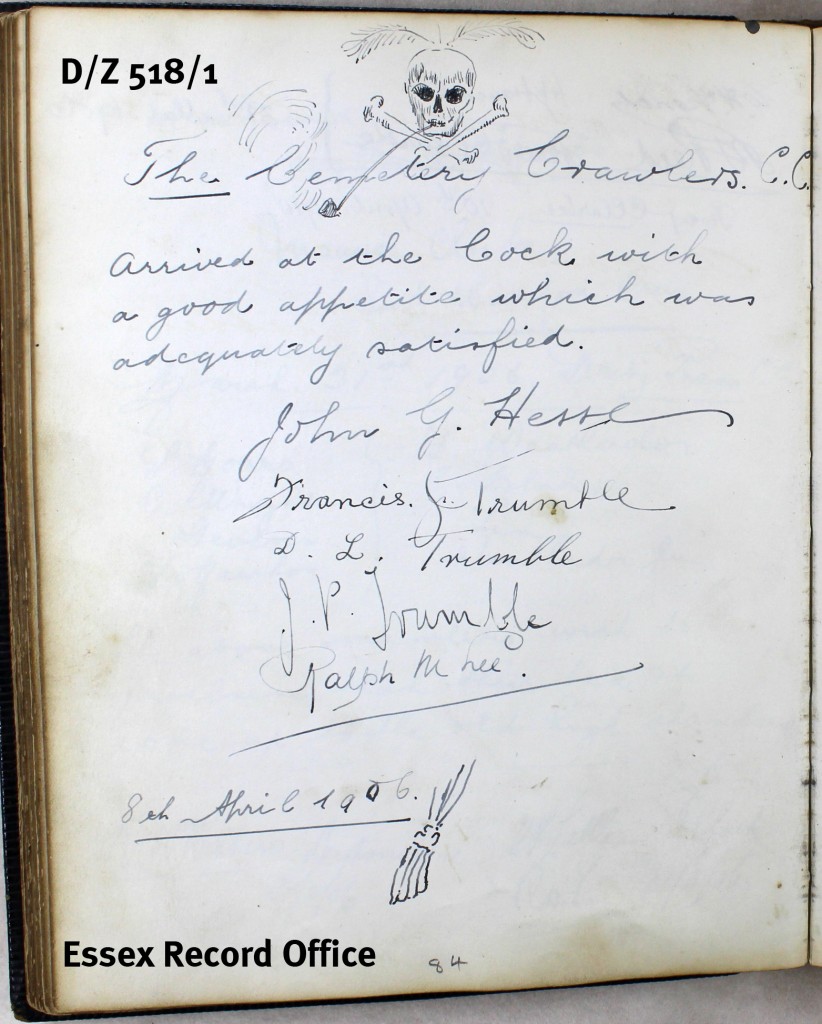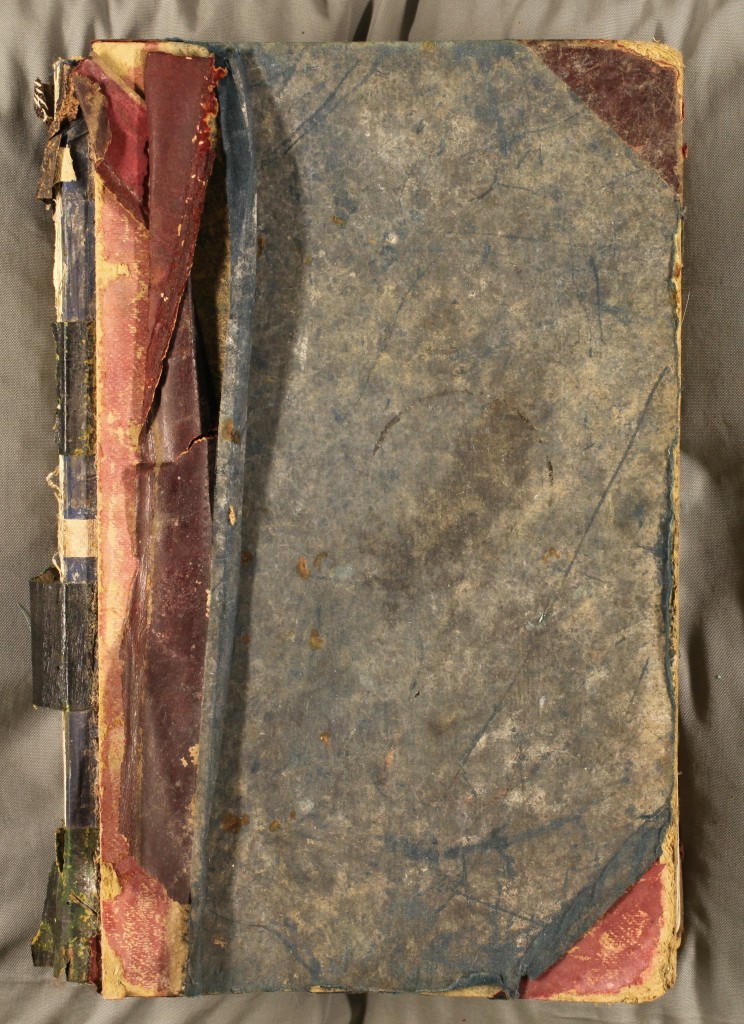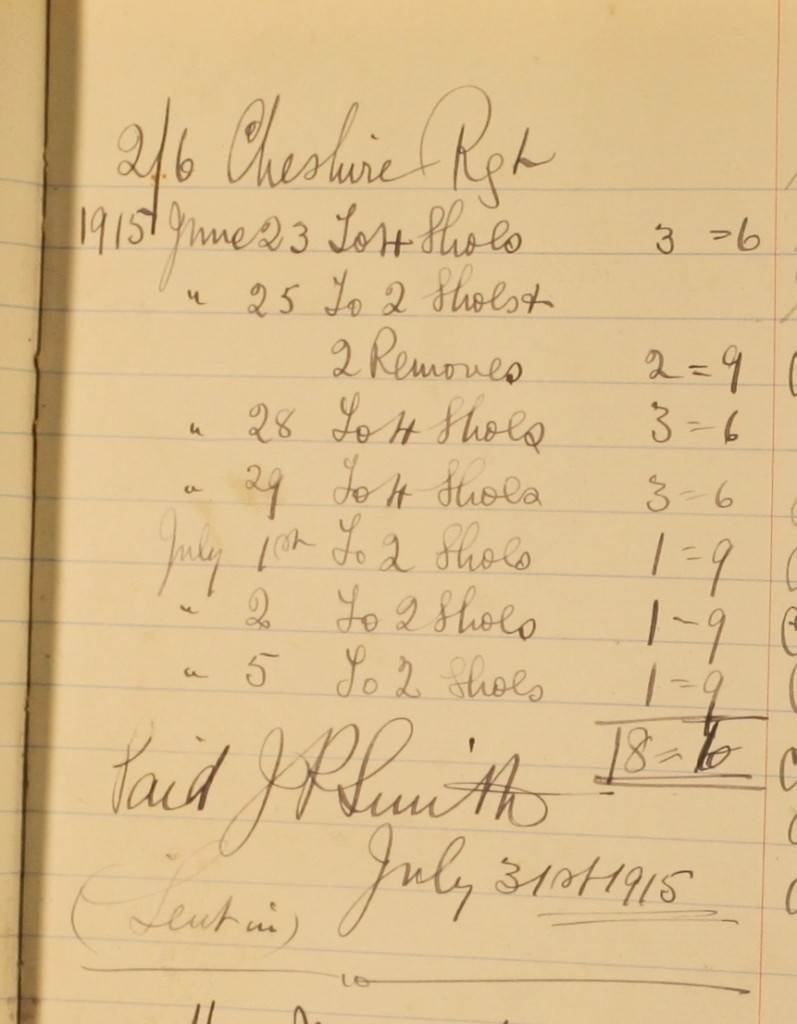As the Tour de France comes to Essex, Archive Assistant Edd Harris takes a look back at our county’s cycling past…
As Essex “gears up” (geddit?) to host several hundred brightly clad racers in the third stage of the Tour de France on the 7th of July, we felt it would be a good idea to take a look back at Essex’s rich cycling past. Essex had cycling aficionados, fans and competitors long before the exploits of Ian Stannard and Alex Dowsett brought the county’s cycling talent into the limelight. (I am also reliably informed that Laura Trott comes from Harlow, and Mark Cavendish lives near Ongar.)

TS 310/1 – An ordinary bicycle (penny farthing) leaning against an unidentified shop in Southend.
Before the invention of the safety bicycle life was a much loftier affair for cyclists. To gain any sort of real pace a large wheel had to be used, so brave men clambered onto “ordinary bicycles” or “penny farthings” as they became nicknamed. (If you are feeling very down with the kids, I hear they can also be called “P-fars” and can still be bought from specialist retailers.) The safety bicycle and the pneumatic tyre were in widespread use by 1890 bringing about a massive boom in cycling.
Almost as soon as cycling had been invented clubs were formed and despite the machines still being worth the equivalent of a small car in today’s money, hundreds of people ventured out onto the roads each weekend, and this early boom in cycling Essex is evident in some of the documents in our collections.
D/P 296/1/13 is a register of services held at St Nicholas, Kelvedon Hatch between 1897 and 1908. As well as recording interesting details about events happening both locally and nationally, it also tells us that the Vicar held a number of services specifically for cyclists attended by lots of cyclists.

D/P 296/1/13 – The service register of St Nicholas’ Kelvedon Hatch with a cyclists service attended by 35 cyclists. (Click for larger version)
D/Z 518/1 is the guest book of the Cock Tavern in Ongar and it seems to have been reserved purely for the use of visiting cyclists. We have looked at it once before as part of our document of the month series, but it is well worth re-visiting. Beginning in 1890, it is full of messages of thanks from cyclists, illustrations of the badges of the clubs (amongst other things) and complaints about the local traffic. In one message thirty or more riders are said to have descended on the pub from just one club. One commenter reminisces about his first visit to the Cock Inn, drawing an image emphasising how old fashioned he thought cycling was. He is shown in tweed plus-fours, pipe in mouth, flat-capped and astride his “ordinary”. Can anyone identify T.M.R. Whitwell or any of the other names in this register?

D/Z 518/1 – Entry in the guest book for the Cock Inn in Chipping Ongar. Here T.M.R. Whitwell illistrates his first visit to the pub in 1893. Is this the same Whitwell who illustrated the works of P.G. Wodehouse?

D/Z 518/1 – Another entry from the guest book. A rather delightfully named club – the Cemetery Crawlers
With the increasing affordability of cycling, it became the working man and woman’s chance of escape, providing them with the freedom to travel where and when they wanted. As its popularity grew, however, the well-heeled country gent was becoming worried that his quiet country solitude was being disturbed by this riff-raff and in an attempt to assuage their worry, the National Cyclists Union banned racing on the roads in 1890. This was a ban which would last till the 1950 and shaped the character of British cycling to this day. We have always been at our best when taking part in the once clandestine discipline of time trialing, our biggest stars, Boardman, Wiggins and Dowsett can all trace their heritage back to the black clad cyclists hammering along the country’s A-roads in pursuit of the best time whilst trying to avoid the attentions of the authorities.

D/Z 518/1 – Another entry from this fascinating guestbook. It seems like interacting with motorcars was a problem for cyclists even way back in 1906.

A series of sketches detailing the extra forms of transport considered by Lieutenant Colonel Francis H.D.C. Whitmore then High Sheriff of Essex when his car broke down en-route to an important engagement in 1922.


Over time the various clubs began to specialise in different activities. There were racing clubs who time trialed and raced on private tracks, there were social clubs and there were touring clubs. Eventually one club would form which attempted to encompass cyclists all over the country. The Cycle Tourists Club or CTC would go on to become advocates for the pastime as well as organising rides and meets. The Essex Section of the CTC was formed in 1927 and almost immediately got down to business. It seems that that business was initially to very carefully delineate the boundaries of the section to avoid confrontation and then to move on to the more important tasks of arranging for design and supply of a club badge (not without some argument), deciding where to hold their Christmas dinner and ensuring that the tea stops they visited on their rides were of adequate quality. There is a little bit of riding too. Tellingly, they had to cancel a women-only ride due to a lack of interest, a problem which still blights the male-dominated pastime to this day.

A13272 – On this page of the CTC minute books one member seems somewhat worried about substandard tea.

A13272 – During this meeting arrangements were made for bike parking in a cow shed in Chelmsford during a lecture.
So, when Le Tour comes charging though Essex on the 7th of July remember that this is not a new cycling boom, more of a renaissance. Cycling in Essex can trace a very long history and we are always looking for more information and material relating to the clubs and riders of Essex.















